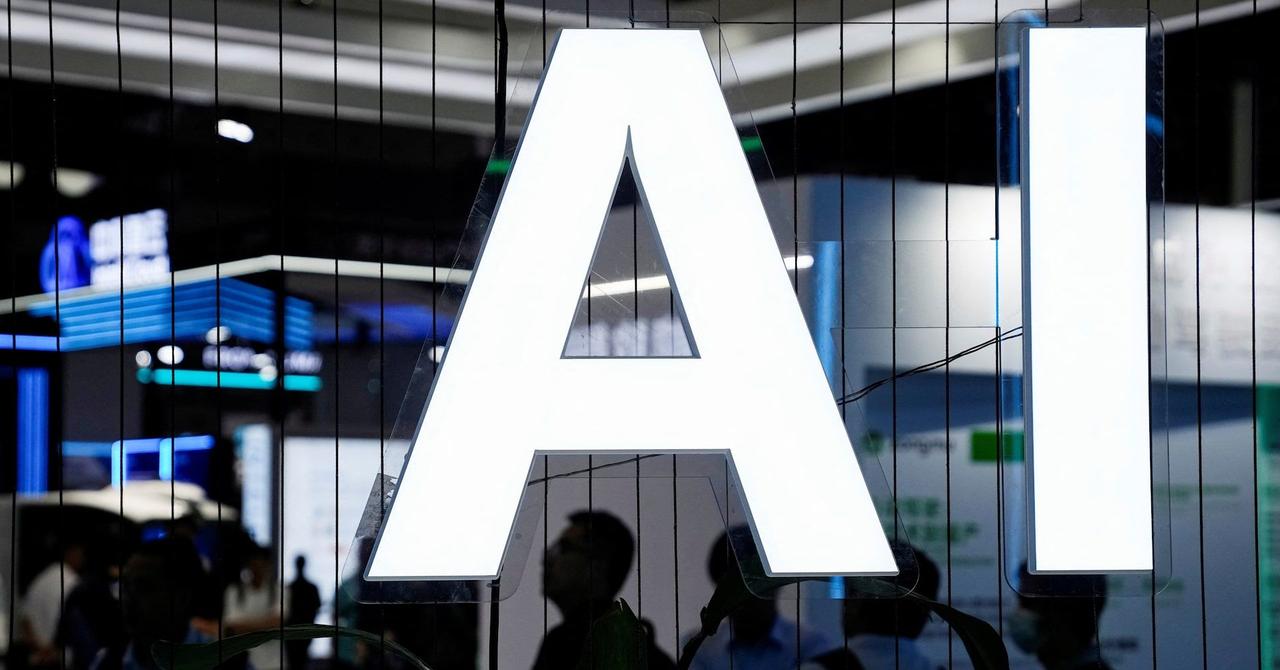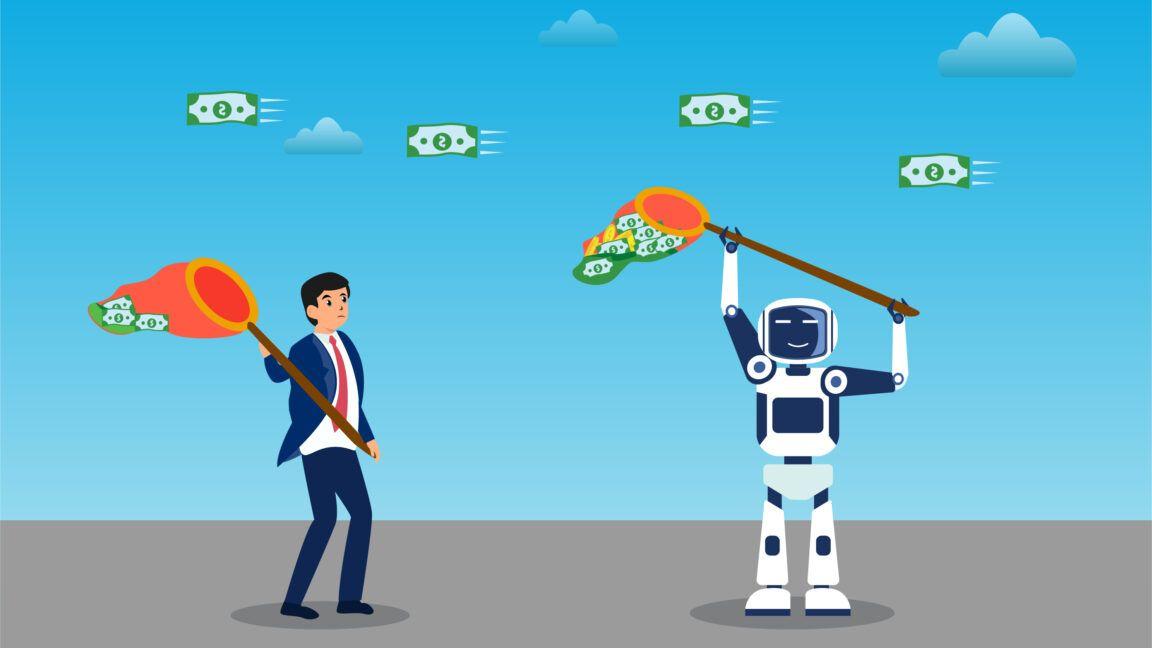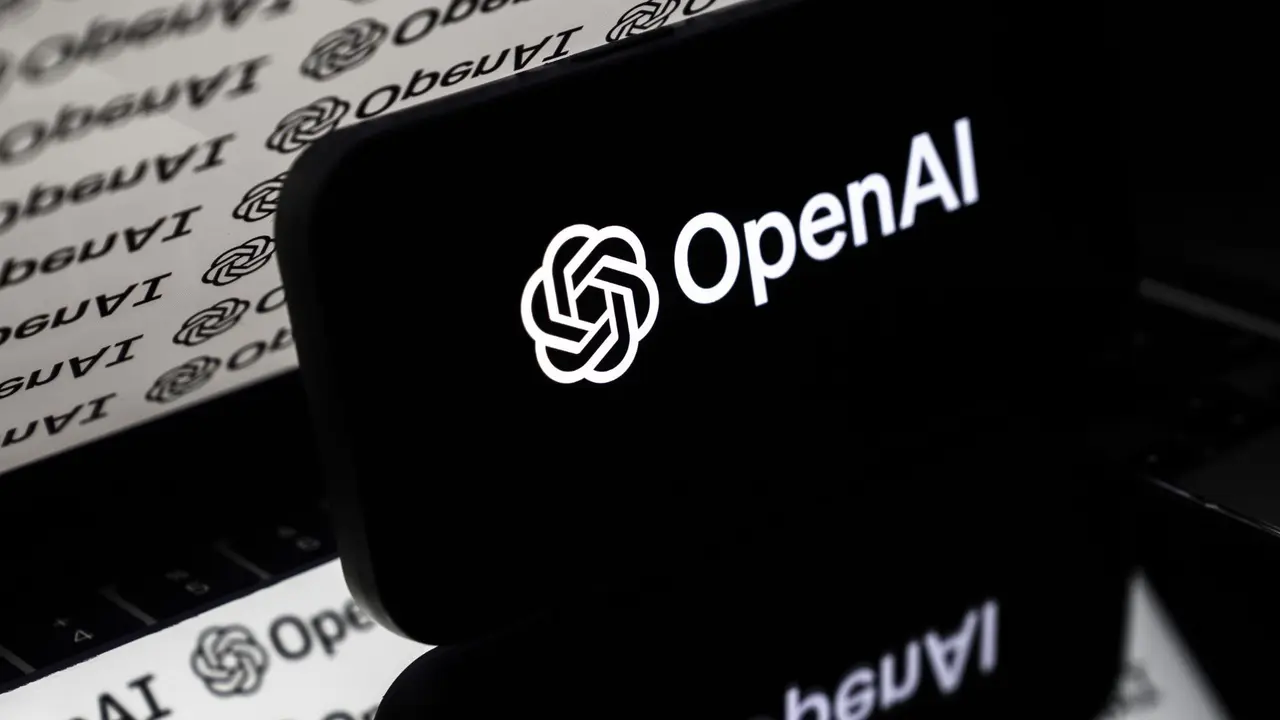Getty Images and Shutterstock Announce $3.7 Billion Merger Amid AI Challenges in Stock Photography
3 Sources
3 Sources
[1]
Stock Photography's Crossroads: Can a Getty-Shutterstock Merger Fix It?
As someone who spent over a decade in the stock photography and creative tools industry, I've seen firsthand how it has evolved. The news of a potential Getty and Shutterstock merger made me think about how the stock photography industry actors found themselves at a crossroads and what future lies ahead. This is a big deal, but can it really fix the problems of falling prices, AI disruption, and unhappy contributors? Let's look at how we got here and what the future holds. The stock photography market's consolidation into an oligopoly didn't happen overnight. Getty Images, Shutterstock, Adobe Stock, and to some extent Canva, now dominate, but their journeys to this position have been vastly different. Getty Images was one of the first to enter the market of content licensing and remains the only company that has seen the full industry evolution from an expensive, contributor-rewarding rights-managed model to a one-size-fits-all microstock royalty-free approach fueled by technological progress and globalization. In the late 1990s and early 2000s, it built its dominance by acquiring tens of photography collections and responding to market threats with acquisitions like iStockphoto and Jupiterimages. Notable acquisitions such as WireImage and Hulton Archive cemented its editorial dominance, which could only be challenged by real-time coverage from Reuters or Associated Press. For commercial photography, there were times when professional photographers leaned on Getty above everything else, and being accepted there was akin to winning a lottery ticket. On the business side, Getty's dominance in news, sports, and entertainment imagery made it the go-to platform for publishers, broadcasters, and marketers needing timely and exclusive visuals. However, the growth spurt didn't last forever. A private equity leveraged buyout put massive debt on the company, halting its growth. While Getty remains a great business and an undeniable market leader in editorial, archives, and premium imagery, its revenues have been close to stagnant for the past 15 years. Shutterstock began as a creative-first platform, focusing on royalty-free commercial imagery. Unlike Getty, it avoided editorial content for years. Its momentum surged when Insight Partners injected $50M into the company to create a new market leader. Aggressive technology innovation spurred growth, marked by a successful IPO. In 2014, Shutterstock reported $328M in revenues with a remarkable 39% YoY growth rate. However, Adobe's 2014 acquisition of Fotolia forced Shutterstock to rethink its strategy. This led to the launch of Shutterstock Editor (2015) and a series of acquisitions to diversify its offerings: While these acquisitions helped Shutterstock expand, they also highlighted challenges in achieving organic growth in recent years. Despite its expanded portfolio spanning commercial videos, music, editorial content, and AI-driven data licensing, Shutterstock's core downloads have remained stagnant or declined. The company's scale is huge, with over $900M in revenue, but its $1B-something market cap reflects uncertainty about the future. Adobe's entry into stock photography through its acquisition of Fotolia was strategic. By integrating Adobe Stock into Creative Cloud, Adobe locked in a loyal user base and created a seamless experience for its customers. This synergy has been a significant driver of Adobe Stock's growth, with Creative Cloud reporting $12.5B in revenue for FY2023. Unlike Getty and Shutterstock, Adobe has focused on its ecosystem rather than dominating the broader market. Now, the merger of Getty and Shutterstock creates a giant valued at upwards of $3.7B, solidifying the oligopoly but raising critical questions about how they'll navigate an industry facing declining prices, contributor dissatisfaction, and the existential challenge of generative AI. Generative AI tools like OpenAI, MidJourney, Stability AI, and others are fundamentally changing the way visual content is created. Lesser-known tools, like KREA.ai built on Flux, are capable of generating bespoke content on demand, but adoption remains slow due to the time and skills required to master the proper prompts. The learning curve, inconsistent results, and copyright uncertainty hold back the broader market penetration of these AI tools, but this will eventually be resolved, as it has been with every significant disruption in modern history. On the other side, editorial imagery remains somewhat insulated from this disruption. You can't generate real-time images of major events, celebrities, or sports games using AI. However, the same forces driving down creative content prices are impacting editorial collections, albeit at a slower pace. For Getty and Shutterstock, their combined editorial offering will be a competitive edge, warranting its presence as a vital tool regardless of AI progress. On the creative side, AI training data has become a critical revenue stream. Both Getty and Shutterstock have been licensing their vast libraries to AI companies, leveraging their proprietary content for training generative models. When those efforts are combined and aligned within a single company, it will create significant leverage that may lead to success in copyright disputes. Companies like Stability AI, currently facing lawsuits from Getty Images, might find themselves left with few options other than settling before losing in court. However, relying on data licensing as a lifeline is not sustainable. As AI models become more self-sufficient, their dependence on licensed training data will diminish, leaving platforms scrambling to replace this income. Most analyses leave contributors aside, but I won't. Contributors have always been the backbone of stock photography platforms but their relationship with these platforms is increasingly strained. Getty historically pays contributors low percentages of the customer-paid prices. Shutterstock, in contrast, has maintained higher royalty levels and established minimums for RPD, providing more stability for contributors. However, both platforms are likely to push contributors further as they face mounting pricing pressure and AI disruptions. Exclusive contributors may find new opportunities as platforms look to differentiate their libraries, but for non-exclusive creative content suppliers, royalty squeezing seems inevitable. The oversupply of creative imagery and contributors' inability to unite for action only exacerbates the issue. The last notable success was the anti-DollarPhotoClub movement a decade ago. The hard truth is that technological progress, globalization, and the competitive growth race among agencies have led to an oversupply of creative imagery. Examples of this oversupply are everywhere. Search for any generic term on a stock platform, and you'll find thousands, if not millions, of similar images. This glut, combined with AI's ability to generate hyper-specific content, has devalued creative imagery across the board. Platforms need to reimagine their role in this new landscape. For businesses, this means stock photography platforms need to provide more than just access to images -- they need to offer tools, integrations, and unique value propositions. Getty and Shutterstock have significant incentives to adapt. Their vast libraries give them leverage over AI companies, enabling them to monetize their data for training while they still can. At the same time, both platforms must move quickly to integrate generative AI into their ecosystems. While they already have numerous AI-related deals and capabilities, to stay relevant in the creative content market, they might need to heavily invest in proprietary generative AI models or bet (if not acquire) on ethical platforms like BRIA.ai. This could mean offering proprietary AI-powered tools that allow contributors and users to create and manipulate visuals on demand. Without this shift, they risk losing relevance as businesses turn to platforms that provide seamless, on-demand solutions. The Getty Images/Shutterstock merger is a defensive move in a rapidly evolving industry. It creates a dominant force with vast content libraries and operational scale, but it doesn't solve the fundamental challenges facing the stock photography market. Generative AI is reshaping how businesses think about content creation, putting immense pressure on traditional stock models. Contributors, already strained, will likely face further royalty cuts or be left out entirely as platforms adapt to new market realities. For Getty and Shutterstock, the path forward lies in leveraging their strengths while embracing the future. They must invest in AI tools, move beyond the era of simply boasting the largest content library, and redefine their value proposition. To remain relevant, they need to evolve from merely selling images to truly becoming a creative platform and find ways to integrate seamlessly into the workflows of their users. The merger buys them time, but the real question remains: Can they innovate fast enough to remain indispensable in an industry that's being disrupted from every angle?
[2]
The Getty-Shutterstock Merger is Yet Another Step in a Race to the Bottom
This week, Getty Images and Shutterstock announced an intent to merge, bringing together two of the top three largest stock photography companies together. It's just one more step down the road to rock bottom. Getty Images, which already owns iStock, stands to become a hulking behemoth in the stock photography market if its merger with Shutterstock is approved. Exact numbers on how valuable this industry is vary, but different intelligence-gathering agencies estimate its current worth somewhere in the neighborhood of $4.98 billion with the potential to reach as much as $7.3 billion by 2030. To put that in perspective, the new Getty Images after the merger is estimated to be worth $3.7 billion -- that's nearly 75% of the entire market's value in 2025. One company owning that much of the industry would give it significant power to control pricing and squeeze out smaller companies like DepositPhotos, Dissolve, and even Adobe Stock. For years, stock sites have been weakening in value to photographers. Even the number of those who work directly for a company like Getty has been waning and the value of the contracts has become significantly reduced compared to 10 or 15 years ago. By owning more of the market, Getty opens up its options. On the one hand, it can push the value of individual photos down further so that it can attract more companies with a lower price. Lower buying price means lower commissions for photographers since Getty is going to want to make as much per photo as possible, even while it's reducing their value. Getty could also keep prices the same but move to give photographers a lower commission knowing that those photographers have no better options outside of what Getty can offer since it would control 75% of the market. Speaking to Artnet, photojournalist Angus Mordant says that this merger would "create a monopoly that only stands to hurt photographers" since "both Getty and Shutterstock have been notorious for leading the race to the bottom of the barrel with some of the lowest licensing rates in the industry." These two brands coming together doesn't seem like a recipe to reverse that trend. But what Getty likely really wants is to control the vast library of images so that it can train AI. Getty is already fiercely defending its image library -- it is suing Stability AI, makers of Stable Diffision, for "pure theft" of its image assets right now. The company likely sees the merger with Shutterstock as a way to dramatically increase the number of images it can train an AI image generator on to, eventually, replace a majority of its non-live-event-based photos with this AI-focused future big tech companies seem intent on spiraling us toward. All of this is to say that should Getty succeed in its desire to merge with Shutterstock, it will just be the latest step in a race to the bottom that photography has been stuck in for some time now. Big companies seem to be salivating at the thought of creating an AI that it can sell because then it will no longer have to pay any real human for the content that is produced. They want pure, unfiltered profit and AI image generators look like cash printing machines to them. As we've seen, AI is incapable of training itself. It must have real images made by actual humans to create content that looks remotely believable. It therefore makes the most sense for a company like Getty to amass as large a library as possible as soon as possible so that it can then transition to the post-photographer world that will generate the most money. Regulators should reject the merger of Getty Images and Shutterstock.
[3]
Shutterstock and Getty Merge to Meet AI Challenge in $3.7 Billion Deal
Getty Images said on Tuesday it would merge with rival Shutterstock to create a $3.7 billion stock-image powerhouse geared for the artificial intelligence era, in a deal likely to draw antitrust scrutiny. The companies, two of the largest players in the licensed visual content industry, are betting that the combination will help them cut costs and grow their business by unlocking more revenue opportunities at a time when the growing use of generative AI tools such as Midjourney poses a threat to the industry. Shutterstock shareholders can opt to receive either $28.80 per share in cash, or 13.67 shares of Getty, or a combination of 9.17 shares of Getty and $9.50 in cash for each Shutterstock share they own. The offer represents a deal value of more than $1 billion, according to Reuters calculations. Shutterstock's shares jumped 22.7 percent, while Getty was up 39.7 percent. Stocks of both companies have declined for at least the past four years, as the rising use of mobile cameras drives down demand for stock photography.
Share
Share
Copy Link
Getty Images and Shutterstock, two giants in the stock photography industry, have announced a $3.7 billion merger. This move aims to address challenges posed by AI and declining market conditions, but raises concerns about market dominance and the future of photography.

Getty and Shutterstock Announce Industry-Shaking Merger
In a move that's set to reshape the stock photography landscape, Getty Images and Shutterstock have announced their intention to merge, creating a $3.7 billion powerhouse in the visual content industry
1
3
. This merger comes at a critical time when the industry faces challenges from declining prices, contributor dissatisfaction, and the disruptive force of generative AI.The Road to Consolidation
The stock photography market has evolved into an oligopoly dominated by a few key players. Getty Images, with its roots in the late 1990s, built its empire through strategic acquisitions and a strong presence in editorial content
1
. Shutterstock, on the other hand, focused on royalty-free commercial imagery and experienced rapid growth, going public in 20141
.Both companies have faced challenges in recent years. Getty's growth stagnated due to debt from a leveraged buyout, while Shutterstock struggled with organic growth despite diversifying through acquisitions
1
. The merger appears to be a strategic move to consolidate their strengths and face industry challenges together.AI: Threat and Opportunity
The rise of generative AI tools like OpenAI, MidJourney, and Stability AI poses an existential challenge to traditional stock photography
1
. These AI tools can create bespoke content on demand, potentially reducing the need for pre-existing stock images. However, the learning curve and copyright uncertainties associated with AI-generated content have slowed widespread adoption.Both Getty and Shutterstock have been licensing their vast libraries to AI companies for training purposes, creating a new revenue stream
1
. The merger could strengthen their position in this area, potentially giving them leverage in ongoing copyright disputes with AI companies like Stability AI1
2
.Market Dominance and Antitrust Concerns
The merger would create a giant controlling an estimated 75% of the stock photography market's value
2
. This level of market dominance raises significant antitrust concerns and could lead to reduced competition, potentially harming smaller companies in the industry2
3
.Related Stories
Impact on Contributors and Pricing
There are concerns that the merger could further drive down prices for stock photography and reduce commissions for contributors
2
. Both Getty and Shutterstock have been criticized for leading a "race to the bottom" with low licensing rates2
. The combined company's market power could exacerbate this trend, leaving photographers with fewer alternatives.The Future of Stock Photography
The merger appears to be a strategic move to address the challenges posed by AI and changing market dynamics. By combining their resources, Getty and Shutterstock aim to cut costs and unlock new revenue opportunities
3
. However, critics argue that this could accelerate the transition to an AI-focused future, potentially marginalizing human photographers2
.As the deal moves forward, it will likely face scrutiny from regulators concerned about market concentration
3
. The outcome of this merger could have far-reaching implications for the future of stock photography, the livelihoods of contributors, and the broader creative industry.References
Summarized by
Navi
Related Stories
Getty Images and Stability AI Face Off in Landmark UK Copyright Trial
09 Jun 2025•Policy and Regulation

Perplexity Strikes Multi-Year Getty Images Deal to Address Copyright Concerns
31 Oct 2025•Business and Economy

Getty Images Spends Millions in Legal Battle Against AI Copyright Infringement
29 May 2025•Policy and Regulation

Recent Highlights
1
AI Chatbots Sway Voters More Effectively Than Traditional Political Ads, New Studies Reveal
Science and Research

2
Trump signs executive order to override state AI laws despite bipartisan pushback
Policy and Regulation

3
OpenAI warns upcoming AI models will likely pose high cybersecurity risk with zero-day exploits
Technology





